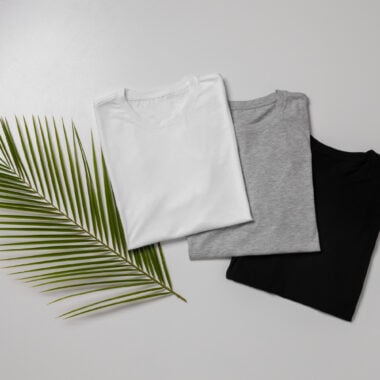Direct to Film (DTF) technology is a modern method of transferring designs onto various surfaces, including garments and textiles. This innovative technique involves the use of a specialized printer to print designs directly onto a thin film, which is then transferred onto the desired substrate using heat and pressure. DTF technology has gained popularity in the printing industry due to its versatility and ability to produce vibrant, detailed prints with ease.
Unlike traditional printing methods that involve multiple steps and require different types of equipment, DTF technology streamlines the printing process, making it more efficient and cost-effective. By eliminating the need for complex pre-treatment processes and post-printing steps, DTF technology offers businesses a convenient solution for producing high-quality custom prints quickly and accurately.
How DTF Transfer Machines Work
DTF transfer machines utilize a simple yet effective process to transfer designs onto various surfaces. The first step involves printing the desired design onto a special heat transfer film using a compatible printer. The heat transfer film is then laid over the material to be printed on, such as fabric or plastic.
The next stage involves the DTF transfer machine applying heat and pressure to the film, causing the design to transfer onto the material. This heat transfer process ensures that the design adheres firmly to the surface, creating a vibrant and durable finished product. The versatility and efficiency of DTF transfer machines make them a popular choice for businesses looking to personalize and customize a wide range of items.
Benefits of Using DTF Transfer Machines
DTF transfer machines offer numerous advantages to businesses looking for efficient, cost-effective printing solutions. One primary benefit is the versatility they provide in terms of material compatibility. These machines can work with a wide range of substrates, including cotton, polyester, and blends, making them suitable for various applications such as apparel, accessories, and promotional items.
Another substantial advantage of using DTF transfer machines is the high-quality finished products they deliver. With vibrant colors, detailed designs, and excellent durability, the prints produced by these machines exhibit a professional look that meets the standards expected in the market. Additionally, the ease of use and quick turnaround times make DTF transfer machines a valuable asset for businesses aiming to streamline their printing processes and increase productivity.
Different Types of DTF Transfer Machines
DTF transfer machines come in various types to cater to different needs in the printing industry. One common type is the manual DTF machine, which requires more hands-on operation by the user. These machines are typically more affordable but may not be as efficient for high-volume printing.
On the other hand, automatic DTF transfer machines are equipped with advanced features to streamline the printing process. These machines are suitable for businesses with a high demand for printing as they can handle large quantities of transfers with minimal manual intervention. The automatic DTF machines offer improved efficiency and consistency in printing results compared to their manual counterparts.
Factors to Consider When Choosing a DTF Transfer Machine
When looking to invest in a DTF transfer machine, it is essential to consider the printing speed that the machine offers. The speed at which the machine can transfer designs onto various materials can greatly impact your production efficiency. Be sure to assess your business’s needs and choose a DTF transfer machine that aligns with your required output capacity.
Another crucial factor to consider is the resolution and quality of prints that the DTF transfer machine can achieve. The clarity and detail of the prints are paramount in delivering high-quality products to your customers. Take the time to compare the resolution capabilities of different machines and opt for one that can meet your printing standards seamlessly.
Common Applications of DTF Transfer Machines
DTF transfer machines find wide application across various industries due to their versatility and efficiency. One of the common uses of DTF transfer machines is in the apparel industry for printing designs on t-shirts, hoodies, and other clothing items. The ability of DTF technology to create vibrant, detailed prints on fabric makes it a popular choice for custom apparel businesses looking to offer unique and high-quality products to their customers.
Additionally, DTF transfer machines are also utilized in the promotional products industry for creating personalized items such as bags, hats, and accessories. The versatility of DTF technology allows businesses to easily customize promotional merchandise with logos, text, and graphics to meet the specific needs of their clients. This flexibility in design and production makes DTF transfer machines an ideal solution for companies looking to enhance their branding efforts through customized promotional items.
Maintenance Tips for DTF Transfer Machines
Regular maintenance of DTF transfer machines plays a crucial role in ensuring their optimal performance and longevity. One key aspect of maintenance is keeping the machine clean. Dust and debris can hinder the machine’s functionality, so regular cleaning with appropriate tools and procedures is essential to prevent any potential issues from arising. Additionally, it is important to inspect the machine regularly for any signs of wear and tear, such as loose components or damaged parts, and address them promptly to avoid further damage or breakdown. Scheduled maintenance checks and proper care can significantly extend the lifespan of DTF transfer machines and minimize unexpected downtime.
Another vital maintenance tip for DTF transfer machines is to follow the manufacturer’s guidelines for servicing and lubrication. Regularly servicing the machine according to the recommended schedule helps keep all components in optimal condition and ensures smooth operation. Proper lubrication of moving parts is also crucial to prevent unnecessary friction and wear, which can lead to inefficiencies or malfunctions over time. By adhering to the manufacturer’s maintenance instructions and guidelines, operators can maximize the performance and reliability of DTF transfer machines, ultimately benefiting their production processes and output quality.
Comparison Between DTF Transfer Machines and Other Printing Methods
DTF transfer machines stand out from traditional printing methods with their ability to produce vivid and high-quality prints on various types of fabrics. Unlike screen printing, which involves complex set-up processes and limited color options, DTF machines offer a more straightforward and efficient way to transfer designs onto garments. Additionally, DTF technology allows for intricate details and vibrant colors to be easily reproduced, making it a popular choice for businesses looking to create eye-catching apparel.
Compared to heat transfer printing, where designs may crack or fade over time, DTF transfer machines provide durable prints that maintain their quality even after multiple washes. The versatility of DTF machines also allows for printing on challenging materials like nylon and leather, expanding the possibilities for customizing items beyond just T-shirts and apparel. In essence, DTF transfer machines offer a cost-effective and reliable solution for businesses seeking to elevate their printing capabilities and deliver superior products to their customers.
Future Trends in DTF Transfer Machine Technology
As technology advances, the future of DTF transfer machines will likely see enhancements in precision and speed. Manufacturers will continue to focus on developing more efficient and user-friendly machines to meet the demands of the evolving market. Additionally, integration with AI and automation technologies is expected to streamline the printing process further, reducing human intervention and potential errors.
Moreover, eco-friendly initiatives are likely to shape the future trends in DTF transfer machine technology. With a growing emphasis on sustainability, manufacturers are exploring ways to reduce the environmental impact of the printing process. This may lead to the development of DTF machines that consume less energy, produce minimal waste, and utilize eco-friendly inks and materials.
Success Stories of Businesses Using DTF Transfer Machines
One notable success story involves a small clothing boutique that saw a significant increase in sales after incorporating DTF transfer machines into their production process. By being able to offer unique and customizable designs to their customers quickly and efficiently, they were able to attract a new demographic of clients who were seeking personalized apparel. This not only boosted their revenue but also enhanced their brand reputation as a trendsetter in the fashion industry.
Another inspiring story comes from a start-up company specializing in custom merchandise. By investing in DTF transfer machines, they were able to fulfill large orders with intricate designs in a fraction of the time it would have taken using traditional printing methods. This efficiency not only allowed them to meet tight deadlines but also gave them a competitive edge in the market, leading to exponential growth and expansion of their business in a short period of time.




